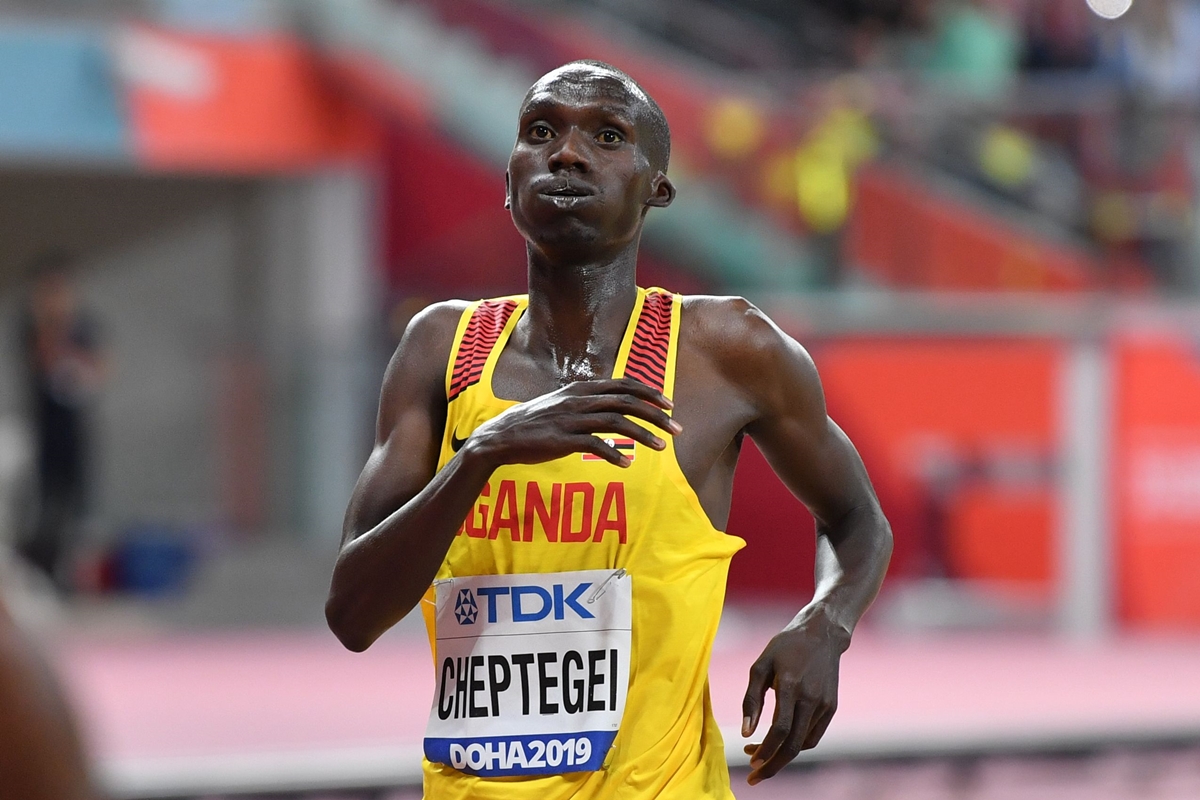

Featured
What Is A 5K Run Equal To In Miles
Modified: January 1, 2024
Discover what a 5K run is equal to in miles and get all the important details. Featured article for runners and fitness enthusiasts.
Introduction
Welcome to the fascinating world of running and fitness! Whether you’re a seasoned runner or just starting your fitness journey, you may have come across the term “5K run.” But what exactly is a 5K run, and how does it translate into miles? In this article, we’ll delve into the concept of a 5K run and shed light on its distance, benefits, and training tips.
A 5K run, also referred to as a 5-kilometer run, is a popular distance in the running community. It is the equivalent of running 5 kilometers, or approximately 3.1 miles. The “K” in 5K stands for kilometers, which is a unit of measurement commonly used outside of the United States. Despite its global popularity, you’ll often find 5K runs featured in races and events worldwide.
Running a 5K is a fantastic way to challenge yourself, test your endurance, and achieve personal fitness goals. Whether you’re aiming to improve your cardiovascular health, lose weight, or simply enjoy the exhilarating feeling that running brings, a 5K run provides a manageable yet fulfilling distance.
So, why is it important to know the exact distance of a 5K run? Understanding that it’s approximately 3.1 miles allows you to gauge your progress, plan your training effectively, and set realistic goals. Whether you prefer tracking your distance using a GPS watch or mapping out routes in your local area, this knowledge helps you stay on track throughout your running journey.
No matter your current fitness level, running a 5K can provide numerous health benefits. It serves as an excellent cardiovascular workout, helping to strengthen the heart, improve lung capacity, and boost overall endurance. Additionally, running releases endorphins, which are natural feel-good chemicals that can help reduce stress and enhance mental well-being.
Now that you have a solid understanding of what a 5K run is and why it’s beneficial for your fitness journey, it’s time to dive deeper into the conversion of kilometers to miles to gain a clearer perspective on the distance you’ll be conquering in a 5K run. Let’s explore this conversion in the next section.
Definition of a 5K Run
A 5K run is a race or event that covers a distance of 5 kilometers, which is equivalent to approximately 3.1 miles. The term “5K” comes from the conversion of kilometers to miles, with each kilometer equaling 0.62 miles. As one of the most commonly organized race distances worldwide, the 5K run attracts participants of all ages and fitness levels.
Typically, a 5K race is designed to be accessible to both seasoned and beginner runners. It offers a manageable distance that can be completed by individuals with varying levels of running experience. Many local communities, charities, and organizations organize 5K runs as fundraisers, fitness events, or social gatherings.
Unlike longer distance races such as marathons or half marathons, a 5K run is considered to be a relatively short distance and can be completed by most individuals with minimal training. However, it still provides an excellent opportunity for runners to test their speed, endurance, and stamina.
Although the term “5K run” is commonly used, it’s worth noting that a 5K can be completed by running, jogging, or walking. Many events encourage participants of all fitness levels to join in the fun and promote an inclusive and supportive environment.
Participating in a 5K run can be a rewarding experience, regardless of whether you’re aiming to achieve a personal best time or simply looking to challenge yourself and engage in a healthy activity. It’s an opportunity to connect with fellow runners, enjoy the race-day atmosphere, and celebrate your accomplishments.
As mentioned earlier, knowing the definition of a 5K run and understanding its distance allows you to set specific goals and train accordingly. Whether you’re a beginner or an experienced runner, it’s essential to tailor your training regimen to the distance you’ll be covering. In the next section, we’ll explore the conversion of kilometers to miles in more detail to give you a clearer understanding of the distance involved in a 5K run.
Conversion of Kilometers to Miles
Understanding the conversion between kilometers and miles is crucial when it comes to determining the distance of a 5K run. While the metric system primarily uses kilometers, many individuals in the United States and some other countries are more familiar with miles as a unit of measurement. Knowing the equivalent in miles helps you visualize the distance you’ll be covering in a 5K race.
The conversion from kilometers to miles has a simple formula: 1 kilometer is approximately equal to 0.62 miles. This means that for every kilometer you run, you cover approximately 0.62 of a mile. Applying this conversion to a 5K run, you can calculate that it is equal to approximately 3.1 miles.
Why is it important to have a clear understanding of this conversion? Well, it allows you to better plan and track your training. For example, if you typically run in miles but are following a training plan or tracking your progress in kilometers, you can convert your distances accordingly to ensure consistency and accuracy.
There are various resources available to help you convert distances between kilometers and miles. Online converters, smartphone apps, and even GPS watches often have built-in conversion features to quickly determine the equivalence between the two units of measurement.
When training for a 5K run, being able to convert between kilometers and miles also allows you to set and achieve specific distance goals. You can break down your training runs into segments that align with the distance of a 5K, making it easier to track your progress and gradually increase your capability to complete the full 5K distance.
Remember that the conversion is an approximation, as it is not an exact 1-to-1 ratio. Nevertheless, it provides a close estimate that is widely used in the running community. Understanding the conversion between kilometers and miles empowers you to effectively plan, prepare, and monitor your training for a 5K run.
Now that you have a solid grasp of the conversion between kilometers and miles, let’s explore the significance of the distance of 3.1 miles and why it is the standard for a 5K run.
Significance of 3.1 Miles
The distance of 3.1 miles, or 5 kilometers, holds significant importance in the world of running and fitness. It has become the standard distance for a 5K run due to several reasons that make it accessible and challenging for participants of all fitness levels.
Firstly, 3.1 miles strikes a balance between being challenging enough for seasoned runners and achievable for beginners. For experienced runners, it offers an opportunity to test their speed and aim for personal records. At the same time, beginners can prepare for and complete a 5K run with a reasonable amount of training.
In addition, the distance of 3.1 miles is ideal for setting short-term fitness goals and tracking progress. Many individuals who are new to running or looking to incorporate regular exercise into their routine find that aiming for a 5K run provides a tangible and achievable objective. It serves as a stepping stone towards longer races and challenges.
Furthermore, the distance of 3.1 miles aligns with the guidelines provided by health organizations for maintaining cardiovascular health. Many experts recommend engaging in at least 30 minutes of moderate-intensity aerobic exercise most days of the week. Running or walking a 5K fulfills this recommendation and helps promote heart health, improve endurance, and burn calories.
Participating in a 5K run also fosters a sense of community and camaraderie. These events attract a wide range of participants, including competitive runners, casual joggers, and walkers. The shared experience of training for and completing a 5K can create bonds and connections among participants, providing a supportive and motivating environment.
Additionally, the distance of 3.1 miles allows organizers to plan and manage races efficiently. Setting a standard distance simplifies logistics, course mapping, and timing. It also enables participants to compare their performance across different events and accurately assess their progress.
Overall, 3.1 miles has become the standard distance for a 5K run due to its balance between challenge and attainability, its alignment with fitness recommendations, the sense of community it fosters, and its practicality for race organization. Now that you understand the significance of the 3.1-mile distance, let’s explore the numerous health benefits associated with running a 5K.
Health Benefits of Running a 5K
Running a 5K offers a plethora of physical and mental health benefits, making it an excellent exercise choice for individuals of all fitness levels. Whether you’re a seasoned runner or just starting your fitness journey, participating in a 5K run can positively impact your overall well-being in several ways.
One of the primary benefits of running a 5K is its ability to improve cardiovascular health. Regular cardiovascular exercise, such as running, strengthens the heart, increases blood flow, and improves overall circulation. By consistently challenging your cardiovascular system during a 5K run, you can lower your risk of developing heart disease, high blood pressure, and other cardiovascular conditions.
Running a 5K also helps to improve lung function and capacity. The sustained effort required during the run engages the respiratory system, allowing your lungs to work more efficiently and increasing their capacity over time. Improved lung function leads to enhanced oxygen exchange, which benefits the entire body.
In addition to physical health benefits, running a 5K can have a positive impact on your mental well-being. Engaging in regular exercise, such as running, promotes the release of endorphins, which are natural mood-enhancing chemicals in the brain. This can help reduce stress, boost mood, and alleviate symptoms of anxiety and depression.
Participating in a 5K run can also enhance your overall fitness and help you reach your weight management goals. Running is an effective calorie-burning exercise, and a 5K run can burn a substantial number of calories depending on your pace and effort. Regularly including 5K runs in your fitness routine can contribute to weight loss, maintenance, or overall fitness improvement.
Beyond the physical and mental benefits, running a 5K can also provide a sense of accomplishment and self-confidence. Completing a 5K run, especially if it’s your first one, acts as a milestone and a testament to your dedication and hard work. It can boost your confidence, motivate you to set and achieve bigger goals, and instill a sense of pride in your accomplishments.
It’s important to note that reaping the full range of health benefits from running a 5K requires consistent effort and proper training. Gradually increasing your mileage, incorporating strength and cross-training exercises, and listening to your body’s needs are essential aspects of a safe and effective training plan.
Now that you understand the incredible health benefits associated with running a 5K, let’s explore some practical tips to help you prepare for and train for a 5K run.
Tips for Training for a 5K Run
Training for a 5K run can be both exciting and challenging, especially if you are new to running or haven’t participated in a race before. To help you prepare effectively, here are some valuable tips to keep in mind as you train for your 5K:
- Set a realistic goal: Start by setting a specific and achievable goal for your 5K run. Whether it’s completing the race without stopping or aiming for a target time, having a clear goal will guide your training and keep you motivated.
- Choose a training plan: There are numerous training plans available, catering to different fitness levels and goals. Find one that suits your needs and follow it consistently. Gradually increase your running distance and intensity as you progress.
- Practice regular running: Consistency is key when training for a 5K. Aim for at least three to four runs per week, including both shorter runs and a longer run each week to build endurance.
- Add strength training: Incorporate strength training exercises into your training routine. This will help improve your overall running performance, prevent injuries, and enhance muscular endurance.
- Include cross-training: While running is essential, cross-training activities such as cycling, swimming, or yoga can provide a break from running while still improving your cardiovascular fitness and overall body strength.
- Listen to your body: Pay attention to any signs of fatigue or discomfort during your training. Rest and recover when needed, and don’t push yourself to the point of injury. Allow ample time for recovery to avoid overtraining.
- Stay hydrated and fuel properly: Proper hydration and nutrition are vital for successful training. Drink enough water throughout the day, especially before and after your runs. Fuel your body with a balanced diet that includes a variety of nutrients.
- Get the right gear: Invest in a good pair of running shoes that provide proper support and cushioning. Wear comfortable and moisture-wicking clothing to keep you cool and dry during your runs.
- Warm up and cool down: Before each run, warm up with dynamic exercises to prepare your muscles and joints. After your run, cool down with static stretches to improve flexibility and reduce muscle soreness.
- Join a running group or find a running buddy: Training with others can provide motivation, support, and accountability. Consider joining a local running group or finding a running partner to share the journey with.
Remember, training for a 5K is a gradual process. Don’t be too hard on yourself if progress feels slow at times. Consistency, patience, and a positive mindset will ultimately lead to success on race day.
By following these tips and staying dedicated to your training, you’ll be well-prepared and confident when it’s time to run your 5K. Now that you have the tools you need, it’s time to lace up your running shoes and hit the road!
Conclusion
Participating in a 5K run is a fantastic way to challenge yourself, improve your fitness, and enjoy the countless benefits that running has to offer. Understanding the definition of a 5K run and its conversion to miles is essential for setting goals and tracking progress. The distance of 3.1 miles holds significant significance in the running community, providing a balance between accessibility and challenge.
Running a 5K offers both physical and mental health benefits. Improved cardiovascular health, increased lung capacity, weight management, and enhanced mood are just a few of the rewards you can experience. Training for a 5K requires commitment, consistency, and proper preparation. Following a structured training plan, incorporating strength and cross-training, and listening to your body are crucial elements to ensure a successful journey.
By following the tips we’ve provided, you’ll be well on your way to conquering your 5K goal. Don’t forget to set realistic goals, create a training plan that suits your needs, and surround yourself with a supportive community. Whether you’re walking, jogging, or running, participating in a 5K run is an accomplishment worth celebrating.
So, lace up your running shoes, embrace the challenge, and enjoy the journey as you prepare for your upcoming 5K run. Remember, every step you take brings you closer to achieving your fitness goals and experiencing the incredible sense of accomplishment that comes with completing a 5K run. Good luck and happy running!








